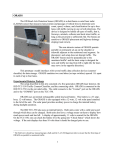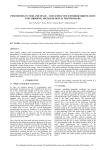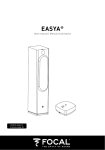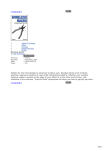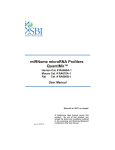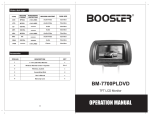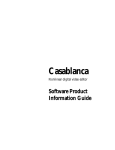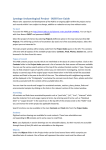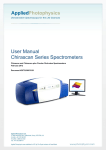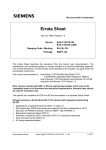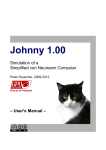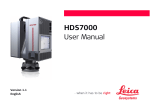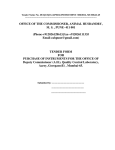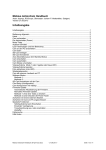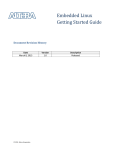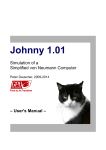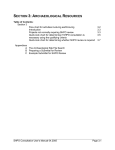Download Read full article - Journal of Young Scientist
Transcript
Journal of Young Scientist, Volume II, 2014 ISSN 2344 - 1283; ISSN CD-ROM 2344 - 1291; ISSN Online 2344 - 1305; ISSN-L 2344 – 1283 RESTORING THE BUILDINGS USING THE 3D TEHNOLOGY Dumitru-Lucian BLĂGESCU1, Ionuț-Alexandru BĂTRÎNACHE1 Scientific Coordinators: Bogdan ERGHELEGIU1, Mariana CĂLIN1 1 University of Agronomic Sciences and Veterinary Medicine of Bucharest, Faculty of Land Reclamation and Environmental Engineering, 59 Mărăşti Blvd, District 1, 011464, Bucharest, Romania Corresponding author email: [email protected] Abstract There exists a very large amount of damaged buildings in Cultural Heritage in the old Centre of Bucharest. Common damages are related with structural deformations (lack of verticality, crashes, e.g.) and the degradation of the support (deteriorated materials, e.g.). Dense information is needed for both of them. Non-intrusive methods based in laser scans provide a 3d support with dense information with a low human cost. Terrestrial laser scanners deliver a dense pointwise sampling of an object’s surface. In many respects, laser scanning follows the same general surveying process as other instruments: data is collected in the field, adjusted to the appropriate coordinate system, and relevant features can be extracted to produce deliverables ranging from topographic maps, coordinate values, 2D or 3D CAD drawings etc. Key words: 3D Laser Scanning, Cultural Heritage, damage building. job”, combined with the selection of the most appropriate hardware and software. According to the laser scanning users’ community, the survey planning should at least contain the following topics: -Determining the goals and objectives; -Analysing the area to be surveyed; -Determining the measuring techniques and equipment; -Data management. Surveying with a 3D laser scanner generates a new set of information – the point cloud. A point cloud can be compared with photogrammetry in that it is derived from a remote sensing instrument, that is, the measurements are taken without physically contacting the target area. Lastly, a comparison can also be made to remote sensing satellites, as additional “non-positional” data is collected from the raw measurements, such as the signal intensity of each point in the cloud, which will vary based on the reflectivity of the scanned object. Each point in the point cloud is measured with respect to the scanner position, and similar to photogrammetry, the position of the scanner (the camera) does not need to be known during the measurements. Aligning the point cloud to local control with laser scanning INTRODUCTION Years ago, the measurement of any object was exclusively done with theodolites or total stations. With the increasing usage of 3D CAD design tools the need for better, more accurate and faster 3D measurement grew in parallel. 3D Laser Scanning describes a method where a surface is sampled or scanned using laser technology. The word LASER is an acronym for Light Amplification by Stimulated Emission of Radiation. The first working laser was demonstrated in May 1960 by Theodore Maiman at Hughes Research Laboratories [7]. The data collected through laser scanning can be used to construct digital, two-dimensional drawings or three-dimensional models useful for a wide variety of applications. In the early stages, laser scanning was short range and mainly used in the automotive and industrial design process to facilitate the Computer Aided Design (CAD) process. Mid-range scanners were developed for the petrochemical industry. Due to the complexity of plants, which were only documented as 2D drawings. However the key to success in using 3D laser scanning remains the setup and implementation of the right methodology and workflow “fit for the 155 scanner and control the properties of the scanner through LeicaHDS Cyclone software. This software provides the tools to automatically detect artificial targets in the scan (Figure1). Powerful yet affordable 3D point cloud visualisation (Figure2), measurement, mark up, and data exchange software for professionals. Leica Cyclone BASIC provides professionals with a set of tools for efficiently managing and executing laser scanning/High Definition Surveying (HDS) projects. Professionals can collect and analyse laser scan data, while collaborating for better informed project decisions. In the field, Cyclone BASIC operates time-of-flight and phase-based Leica Geosystems scanners. Users can manage scan parameters; scan target acquisition; field QA; digital imaging; geo-referencing; and more depending on scanner capabilities. In the office, Cyclone BASIC provides viewing and navigating of point clouds and 3D models, as well as measurement and mark-up/redlining. Cyclone BASIC is a versatile “back-office „data-exchange module, supporting imports and exports of a wide range of formats.[5] is similar to photogrammetric control, as overlapping targets can be used to join multiple scans (photos) together and to “fit” it to the desired coordinate system. The survey preparation phase includes the decision making on the registration technique to be used. These techniques can be subdivided into three categories: registration using 3D re-sectioning of scanned targets, registration by setting the laser scanner over known control points, and registering using cloud to cloud constraints [8] The recording of position, dimensions and/or shape is a necessary part of almost every project related to the conservation of cultural heritage, forming an important element of the documentation and analysis process. For example, knowing the size and shape of a topographic feature located in a historic landscape can help archaeologists identify its significance; knowing how quickly a stone carving is eroding helps a conservator to determine the appropriate action for its protection; while simply having access to a clear and accurate record of a building façade helps a project manager to schedule the work for its.[1] MATERIALS AND METHODS At present there is no standard procedure for survey planning for terrestrial laser scanning. To collect data used in our example we used a LeicaScanStation2. Figure 2. A damage balcony on a building located on French Street, Bucharest (seen on Cyclone software) Figure 1. Reflective target setup over common points used to link neighboring scans Before starting the scanning, the scanning device itself was connected to a laptop that can receive and store all the points coming from the 156 Figure 4. Points cloud representing the façade of the building located in Old Centre, Bucharest Laser scanning might have a use at any stage of a project. Tasks that might be considered as potentially suitable for the application of laser scanning could include any of the following: • contributing to a record before renovation of a subject or site, which would help in the design process as well as contribute to the archive record; • contributing to a detailed record where a feature, structure or site might be lost or changed forever, such as in an archaeological excavation or for at a site at risk; (Figure 5) Figure 3. Leica Scan Station 2 The Leica Scan Station (Figure 3) 2 is a pulsed type, laser Class 3R, laser scanning system that has a modelled surface precision (noise) of 2 mm, an scan resolution of 6 mm (Gaussian based) for position and 4 mm (FWHH - based) for distance at a range of 0m-50 m, the maximum range being 300 m at 90% (134 m at 18%) and a maximum instantaneous scan rate up to 50.000 points/sec. The maximum fieldof-view (per scan)of the scanner is 360° horizontal and 270° vertical and has an optical sighting using the Quick Scan™ button. Laser scanning from any platform generates a point cloud (Figure 4): a collection of XYZ coordinates in a common co-ordinate system that portrays to the viewer an understanding of the spatial distribution of a subject. For most laser scanning instruments, the point cloud can be regarded as the ‘raw product’ of a survey. The point cloud may also include additional information, such as return intensity or even colour values. Generally, a point cloud contains a relatively large number of co-ordinates in comparison with the volume the cloud occupies, rather than a few widely distributed points.[9] Figure 5. Laser scanning for historic sites at risk, St Mary’s Church Whitby, North Yorkshire. • structural or condition monitoring, such as looking at how the surface of an object changes over time in response to weather, pollution or vandalism; • providing a digital geometric model of an object from which a replica can be generated for display, or as a replacement in a restoration scheme; (Figure 6) 157 RESULTS AND DISCUSSIONS It is unlikely that professionals in the heritage sector who require laser scanning data or products will themselves have the means or expertise to undertake the work. It is more likely that survey work will need to be commissioned and undertaken by a specialist contractor. The following tips will help when preparing to commission a survey. • Consider the level of detail required and the extent of the subject. These are often the overriding parameters used to determine the appropriate survey technique and/or deliverable product. • Start by working out what data are needed in order to answer the questions you have set. Try to come up with requirements for accuracy and products. It may not be necessary to specify the actual technique to be used, just the required products. • Before you commission and procure the data, consider how you will use the product; additional costs might be hidden in buying new software/hardware. • Discuss the requirements with possible contractors. A good contractor will be able to advise you if your requirements are achievable, realistic and necessary, as well as provide information on an alternative deliverable product that you may not have considered. Also discuss the work with other members of your organisation, especially with those with relevant expertise, as other uses for the survey data and products may be apparent to them, and may increase the overall value of the work to be commissioned. • Consider how the collected survey will be archived and made available for use in the future. Take advice from national organisations such as the National Cultural Heritage.Determine who will own the collected data and the delivered product. • Finally, prepare a project brief, using a standard document as a base, such as that published by English Heritage (eg Andrews, et al 2009 Metric Survey Specifications for Cultural Heritage). [2] Figure 6. An original and replica bust of the Emperor Caligula generated from data collected by air triangulation laser scanner (courtesy of Conservation Technologies, National Museums Liverpool) • contributing to three-dimensional models, animations and illustrations for presentation in visitor centres, museums, through the internet and through the media (enhancing accessibility/ engagement and helping to improve understanding); • aiding the interpretation of archaeological features and their relationship across a landscape, this contributing to understanding about the development of a site and its significat change to the area; • working, at a variety of scales, to uncover previously unnoticed archaeologically significant features – such as tool marks on an artefact – or looking at a landscape covered in vegetation or woodland • spatial analysis, not possible without threedimensional data, such as line of sight or exaggeration of elevation. [3] It is important to recognise, however, that laser scanning is unlikely to be used in isolation to perform these tasks. It is highly recommended that photography should also be collected to provide a narrative record of the subject. In addition, on-site drawings, existing mapping and other survey measurements might also be required to aid interpretation and understanding. Asking the following questions will help you to better understand what your requirements are 158 and whether laser scanning, in its various forms, is suitable. It will also help to identify possible alternatives. What outputs are wanted? Scanning can contribute to a whole range of outputs, so deciding what outputs you require will help to determine an appropriate project brief. Outputs might include a highly edited surface mesh, two-dimensional drawings, rendered movies or even virtual environments. Other forms of data, such as images and survey control, are likely to be required to contribute to these outputs. The scale of your output is a key decision, which will help determine the accuracy of the product and the required point density.[4] What level of accuracy is required? This is typically related to object size and the purpose of the survey. A common answer is ‘the best that you can do’, but this is not always helpful in deciding what type of technique should be used. It is perhaps more correct to ask what is the optimum accuracy that balances the needs of the task, the capability of the technique and the budget available Figure 7. Laser scanning from an extra tall tripod Is three-dimensional information required? If yes, consider how the information is going to be used. This will help you or the contractor to determine the processing that will be required on the laser scanning data. Even if the answer is no, and you only need two-dimensional measurements and dimensions, laser scanning may still be useful. Laser scanning can be used to provide line drawings in elevation, section, and plan. It is especially useful when access to a site makes it difficult to use conventional methods. The way in which laser scanning enables direct integration of the collected data on site can also help a contractor to reduce the likelihood of revisits.[6] Time and access restrictions? Access and time might be unlimited. For example, the object might be brought to a studio-based scanner. Alternatively, access to the subject may be easy, perhaps because temporary scaffolding is in place, but time may be restricted because the scaffolding will be dismantled, making future access impossible unless new scaffolding is erected. Note that while scanning from a static position requires a stable platform (Figure 7), scanning from scaffolding or from a mast or hydraulic platform is possible, although care should be taken to ensure that the scanner remains stable during operation . Access might be restricted on health and safety grounds, because a building is unsafe, making a survey possible only from a few locations. In an archaeological excavation, survey may be time-critical, as recording is required at each part of the excavation and cannot be repeated. This requires scanning to be available on site during excavation. Budget Although laser scanning is still generally regarded as a high-cost technique, it can be justified, as the information required may not be available in any other way. If the budget is limited, or non-existent, laser scanning probably is not a technique that you can use. Where it is adopted, it is advisable to try to ensure that it can be used in many different ways, so as to provide best value from its commissioning. A number of measured building survey contractors have found that laser scanning is a cost-effective route to 159 combination with the DLR Panoramic Colour Camera a precise and accurate monitoring of the actual environment by means of colour point clouds is achieved. This is unique due to its high precision and quality. producing plans and elevations due to the reduced time on site as compared with conventional survey methods. For a large organisation the savings could fairly quickly compensate for the high initial capital outlay. Can you do this yourself? It may be possible to undertake the data collection and data processing yourself. However, scanning requires specialist skills in order to achieve a precise and reliable product. This might include techniques for providing precise survey control measurement and/or knowledge of 3D CAD or GIS software. If this is your first project, using a contractor is advisable. REFERENCES 3D Laser Scanning for Heritage (second edition) Andrews, D et al 2010 Measured and Drawn: Techniques and Practice for the Metric Survey of Historic Buildings (2 edn). Swindon: English Heritage CIPA2001: Surveying and Documentation of Historical Buildings-Monuments-Sites. Traditional and Modern Methods, CIPA Intl workshop (Potsdam, Germany), 2001. Crutchley, S and Crow, P 2009 The Light Fantastic: Using Airborne Lidar in Archaeological Survey. Swindon: English Heritage Cyra Technologies, Inc.: “Cyclone 4.0-User’s manual” Dallas, R W A 2003 A Guide for Practitioners: Measured Survey and Building Recording. Edinburgh: Historic Scotland Fröhlich, C.; Langer , D.: “3-D Ladar for Heinz, I.; Mettenleiter, M.; Haertl, F.; http://hds.leica-geosystems.com/en/ Inspection of Real World Environments“. 5th ISPRS Conf. on Optical 3-D Measurement Manual”. CONCLUSIONS With the developed visual laser scanner, the control software and the software for model generation,very powerful tools are available that are suitable for most cultural heritage surveying tasks. The developed laser scanner offers high accuracy measurements in conjunction with a high sampling rate and large dynamic range inreflective properties of object surfaces (highly reflective to absorbing). In 160






